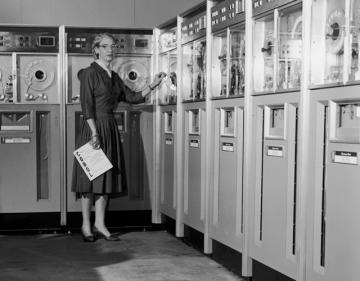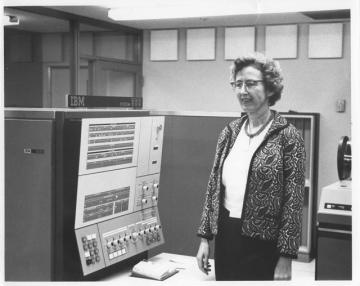The History of Computer Science at Vassar College
by Professor Nancy Ide


In 1931, Grace Murray Hopper returned to Vassar, her undergraduate alma mater, to teach mathematics. She left the college 12 years later to join the U.S. Navy, where she took on pioneering work in computer science in the 1950s and ’60s that eventually led to her multiple prestigious awards (including the first computer science “Man of the Year” in 1969) and her unofficial title as the “Mother of Computing.” Before leaving Vassar, she mentored another young woman mathematician, Winifred Asprey, who, like Hopper, returned to teach at her alma mater after receiving her advanced degrees. However, Asprey remained at Vassar throughout her career, and in the mid-1960s, she won a decade-long battle to convince the administration to purchase a computer, one of the first in a liberal arts college in the country. From then on, students were able to take computing courses using the college’s IBM 360 computer under the auspices of Computer Science Studies, headed by Asprey, and Vassar began offering a Mathematics/Computer Science major in 1969.
In 1990, another woman computer scientist, Nancy Ide, who was then head of Computer Science Studies, worked to establish a stand-alone Computer Science major at Vassar. The Department of Computer Science was born, and since then the major and the department have flourished. The computer science curriculum includes not only the full range of courses covering both theoretical and practical aspects of the field but also offers courses that support and intersect with other disciplines such as art, language and linguistics, cognitive science, film, as well as biology, and the other natural sciences. Currently, the computer science faculty includes one full professor, four associate professors, and one visiting professor who are engaged in a variety of cutting-edge research areas, including artificial intelligence, computational linguistics, distributed algorithms, ad hoc wireless networks, and self-reconfigurable robots, models of parallel and distributed computation, bioinformatics, computational music, hardware design, program specification, program synthesis, and automated software engineering. Their ongoing research projects involve students both during the academic year and summer.
July 2011